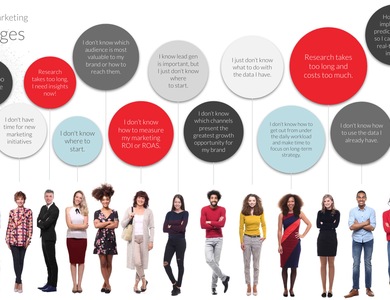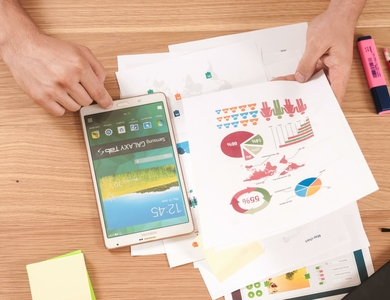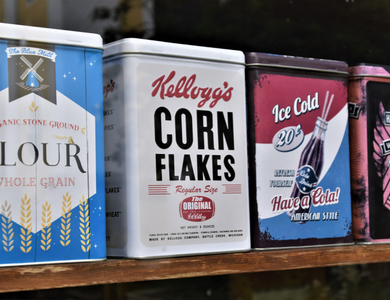
7 Marketing Fails and Reason Why
As a brand, you want to ensure that your marketing strategy is effective and impactful. To do this, you must avoid the biggest mistakes that can hinder your success.
Read MoreThere is brand loyalty, and then there is coffee brand loyalty. Coffee drinkers, especially daily coffee drinkers, just seem to be a particular bunch. But once they find their caffeinated brand of choice, they usually stick with it.
At the front of this group are the Starbucks fanatics. We all know them. They dare not sip another brand. They might not even use a cup that doesn’t have the familiar Starbucks logo on it. They are brand loyalists. Starbucks fans first, coffee lovers second.
Social media popularity has enabled Starbucks to really fine-tune its brand experience.
But why such loyalty? Is Starbucks coffee that good (I ask, as I sip my Pike Place Roast)? Maybe. But there’s certainly something else at play, something very social: the meticulously cultivated Starbucks consumer experience.
Originally that experience consisted of local Starbucks coffeehouses, a rebirth of the cozy neighborhood coffee shop. Using a highly focused brand-centric strategy, Starbucks created a buzz with these popular storefronts. They began popping up everywhere, as coffee drinkers enjoyed Starbucks’s relaxed social atmosphere, where they could gather and caffeinate freely with friends. Good coffee was important, but the experience is what made the brand successful.
In late 2018, the very first “virtual store” emerged in a Starbucks in China, offering customers a digital and personal customer experience like no other. The intent was to offer a more seamless experience and fully integrate the My Starbucks app with other platforms, allowing, for example, a customer to send a personalized beverage to a friend using the app. This kind of personalization is what the company strives for in customer experience.
Today, the Starbucks experience has grown to include social media—or, should I say, devour social media. Since 2008, when then-new CEO Howard Schultz committed to a comprehensive social marketing strategy in response to the economic downturn, Starbucks has dominated social media, sitting comfortably atop many brand rankings. As shown in this article (and companion infographic), among “limited-service restaurants in the US,” Starbucks sat at number one for Twitter, Google+, and Pinterest followers. It also topped the field in Facebook “likes.” In fact, as of this writing, Starbucks has over 36 million Facebook fans, the eleventh-highest total among all brands on Facebook.
Starbucks is committed to cross-sharing throughout the entire digital landscape, a strategy that is driving success.
This social media popularity has enabled Starbucks to really fine-tune its brand experience. Take Instagram for example, where sharing Starbucks-inspired artwork and photos is becoming a popular form of expression for both the company and its fans.
“Not only has Starbucks amassed an incredible amount of [Instagram] followers, but it lets its followers primarily control the content. The vast majority of the images on Starbucks’ account are creative fan-submitted images of the world-renowned coffee,” wrote Christina Austin in a blog at Business Insider.
Starbucks’s Instagram page always features a mix of fan shots and Starbucks-produced images. It’s a great example of the interactive nature of Starbucks’s social media presence.
Of course it’s not just Instagram. Starbucks is committed to cross-sharing throughout the entire digital landscape, a strategy that is driving success. The brand uses each of its social platforms expertly (even Spotify), because it recognizes that each network provides an opportunity to reach a new audience.
Starbucks has recently expanded on their digital experience by improving their customer experience. With the Starbucks app, the ever-loyal and frequent Starbucks customers can get personalized recommendations based on previous orders, the weather, time of day, or whatever is currently popular. The app uses a reinforcement learning platform that is built and stems from Microsoft Azure. The billion dollar company now hopes to expand upon this innovation and is testing out new ways to make these recommendations even more accurate for customers. They are even planning on adding a new feature that allows app users to track exactly where their coffee came from, find out when it was roasted, and get a behind-the-scenes peek at Starbucks’s partnership with these farmers. By using artificial intelligence and machine-learning technology, Starbucks continues to be one step ahead and is making their customers happy with personalization and serving up that digital experience.
In addition to social media, Starbucks is optimizing its engagement with fans through its website as well as popular mobile apps. With tools such as the Starbucks Rewards program, Starbucks is adding value with each interaction. The Starbucks Rewards Program caters to their ‘tech-savvy and digital-loving customer fanbase’ and allows for a personalized experience, one that can become addicting and keep customers coming back.
At one point, crowdsourcing site My Starbucks Idea was a highly social brainstorming platform for all things Starbucks. Fans could share and discuss new ideas, read others’ ideas and vote for their favorites. Users shared tens of thousands of new ideas for coffee and espresso drinks, food, and even music and merchandise, making the site an indispensable market research tool that brought customer priorities to light and created a thriving online community to boot.
Quality of content is valued over quantity of followers.
Starbucks hasn’t been immune to social backlash, however. The 2015 “Race Together” campaign, where Starbucks employees were encouraged to write the words “race together” on cups to get customers to talk about the racial issues that still exist in today’s world, forced the brand to regroup. It turned out to be a social stumble for the company, as a wave of intense negative criticism came flooding in. In fact, CEO Howard Schultz had to write a letter to Starbucks employees to ease concerns over the controversial campaign. Perhaps “Race Together” was a bit of a social overreach.
But even with an occasional stumble, the Starbucks brand is alive and growing, reaching consumers in new, more-personalized ways. Take the aforementioned Starbucks Rewards program. It’s a highly interactive, personalized platform that offers special deals and various customized benefits, covering everything from merchandise to music selections to personalized signature drinks. For the Starbucks fanatic, it’s a convenient lifeline to the Starbucks experience.
For Starbucks, an engaging, personable social presence adds value to an already popular brand.
It’s apparent that Starbucks’s commitment to cultivating its consumer experience is what continues to set the brand apart from the competition. What started with the revitalization of the neighborhood coffeehouse has evolved considerably into cutting-edge social media marketing. But it’s more than that. It’s Starbucks’s quality-over-quantity approach—that is, quality of content over quantity of followers. And encouraging fans to help curate this content is what makes it “quality.”
Of course having quantity in terms of social media followers certainly isn’t a bad thing. In a way, the sheer number of followers seems to reinforce Starbucks’s qualitative approach. People are talking about Starbucks. People are sharing the Starbucks experience.
As we’ve seen, many brands prefer a strategy that allows them to maximize engagement with their fans. This social engagement is what cultivates the brand experience, and it’s something that can’t be attained by simply pouring dollars into traditional advertising. Why do the work (and pay for it) yourself, when your loyal fans can do it for you?
For Starbucks, an engaging, personable social presence adds value to an already popular brand. Plus, with Wi-Fi available at coffeehouse locations, fans can enjoy the full Starbucks experience all at once—in-store and online, in hand and on their phone. This high-touch, multichannel social strategy is winning brand loyalty. Even for these discriminating coffee drinkers, it’s the Starbucks experience first, coffee second. The results speak for themselves.

As a brand, you want to ensure that your marketing strategy is effective and impactful. To do this, you must avoid the biggest mistakes that can hinder your success.
Read More
ROI and ROAS are two commonly used metrics in marketing to measure the effectiveness and efficiency of marketing campaigns.
Read More
Brands have two paths: Embrace the race to commoditization and become a price comparison in the eyes of the consumer. Or understand that consumers’ fundamental wants and needs from brands have been upended, and embrace the opportunity that a values-driven approach can bring.
Read More